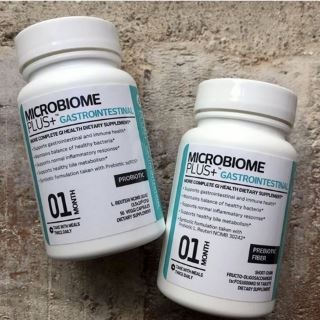Prebiotics act as fertilizer and nurture the positive bacterial inhabitants in our guts that aid us by digesting things we can’t, producing vitamins we don’t, and creating an acidic environment that inhibits the growth of disease-causing bacteria. Prebiotics are plant-based fibers that promote the growth and activity of these beneficial microorganisms in the large intestine and colon. They also increase calcium absorption and bone health.
Foods that are high in fiber are typically high in prebiotics, but not all fiber is prebiotic. A prebiotic is defined as a food that is non-digestible, meaning it passes through the stomach and small intestine. In the colon, the good bacteria use it as food which is great because it amplifies their population. While the good bacteria are proliferating, they ferment it and release fatty acid byproducts that nourish our intestinal lining and help regulate electrolyte levels.
Artichokes, bananas, leeks, onions, garlic, and whole-wheat products are rich, natural sources of prebiotics. Keep in mind that heating usually alters the food’s structure, so eating raw food over cooked food is recommended for maximum prebiotic benefits.
Probiotics are living bacterial cultures and are quite different from nonliving organic prebiotics. Probiotics are naturally found in foods like yogurt (Greek or not), kefir, and other dairy based foods. Because probiotics are alive, they are sensitive to acid and heat, and the stomach acid can destroy most of these good bacteria before they even reach the intestines. Thus, probiotics need help to survive and multiply, and here prebiotics come into play.
Every day, somewhere around 70 million people suffer from gastrointestinal distress. Some of those include people with an infection that take antibiotics to intentionally wipe out bad bacteria. Unfortunately, the nonspecific nature of antibiotics also wipes out the beneficial bacteria, which are critical for optimal digestive health. Whether it is a temporary GI problem or a chronic one, probiotics are often recommended to help ease symptoms by beneficially altering the intestinal flora. Prebiotics are not as popular, but for probiotics to be the most effective, a prebiotic should be involved as well. A supplement that contains both is called a synbiotic because they work synergistically. The prebiotics give the probiotics an edge and a substrate to latch on to, increasing the probiotic’s chance of surviving the gastrointestinal tract. Prebiotics set up the stage so that probiotics can have their best chance at survival and success.
Author:
Kelly Daescu, MS
Sources (accessed July, 2016):
- http://americannutritionassociation.org/newsletter/digestive-issues
- http://www.bbc.co.uk/sn/humanbody/truthaboutfood/healthy/prebiotics.shtml
- https://draxe.com/prebiotics/
- http://www.eatright.org/resource/food/vitamins-and-supplements/nutrient-rich-foods/prebiotics-and-probiotics-the-dynamic-duo
- http://www.livestrong.com/article/335114-the-difference-between-probiotic-prebiotic/
- http://www.ncbi.nlm.nih.gov/pmc/articles/PMC3705355/
- http://www.ncbi.nlm.nih.gov/pubmed/17311984
- http://paleoleap.com/need-know-prebiotics/
- https://www.researchgate.net/publication/282658249_Scientific_evidence_for_health_effects_attributed_to_the_consumption_of_probiotics_and_prebiotics_An_update_for_current_perspectives_and_future_challenges







